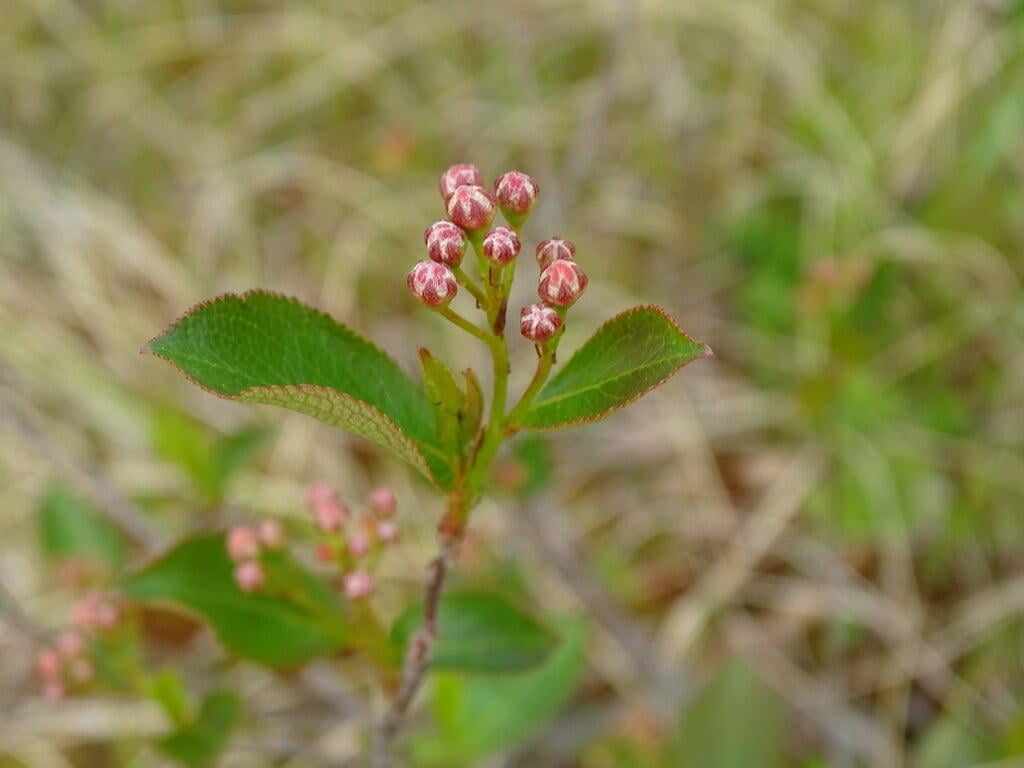Aronia Melanocarpa
Black chokeberry description:
Aronia Melanocarpa, commonly known as Black Chokeberry, is a deciduous shrub that belongs to the Rosaceae family. It is native to eastern North America and can be found growing in a variety of habitats, from wetlands to upland forests.
The shrub typically grows to a height of 4-8 feet and has a spread of 3-5 feet. It has dark green, glossy leaves that are oval-shaped and serrated, and turn a vibrant red color in the fall. In the spring, Aronia Melanocarpa produces clusters of small, white or pinkish flowers that are around 1 inch in diameter. The flowers give way to small, dark purple berries that are edible and have a tart, astringent flavor. These berries are high in antioxidants and are a popular food source for birds and other wildlife.
Aronia Melanocarpa is a hardy plant that is adaptable to a range of soil types and growing conditions. It prefers moist, well-draining soil and full sun to partial shade. It is also resistant to pests and diseases, making it a low-maintenance plant for gardens and natural areas.
Overall, Aronia Melanocarpa is a beautiful and versatile shrub that is an excellent addition to any landscape. Its attractive foliage, spring blooms, and edible fruit make it a popular choice among gardeners and wildlife enthusiasts alike.
Native Range:
Black Chokeberry is native to the eastern regions of North America, including the United States and Canada. In the United States, it is found primarily in the northeastern and north-central regions, including Maine, New Hampshire, Vermont, Massachusetts, Rhode Island, Connecticut, New York, New Jersey, Pennsylvania, Ohio, Michigan, Wisconsin, and Minnesota.
Standard Plant Information:
Plant Height: 4-8'
Bloom time: May - July
Preferred Habitat: Does well in part shade to full sun with moist to wet soil. Often found in bogs, swamps, wetlands, and forest openings.
Planting:
Planting a tree/shrub seedling or small potted tree/shrub properly is important to ensure its healthy growth and development. Here are the steps you can follow to plant a tree:
Choose the right spot: Select a spot with adequate sunlight, water, and soil drainage. Make sure the tree has enough space to grow to its full size without interfering with other plants, structures, or utility lines.
Prepare the soil: Dig a hole that is twice as wide and slightly shallower than the root ball of the seedling. Remove weeds or debris from the area. Loosen the soil around the edges of the hole to help the roots grow more easily.
Plant the seedling: Place the seedling in the hole, making sure the top of the root ball is level with the ground surface. Gently spread out the roots and fill in the hole with soil, tamping it down lightly as you go.
Water the seedling: Water the tree/shrub deeply and thoroughly after planting, making sure the soil is evenly moist. This will help settle the soil around the roots and eliminate any air pockets.
Monitor the growth: Keep an eye on the seedling to make sure it is getting enough water and sunlight, and that it is not being attacked by pests or diseases. Prune any damaged or dead branches as necessary, and provide support if needed.
By following these steps, you can help ensure the healthy growth and development of your newly planted tree/shrub seedling.










